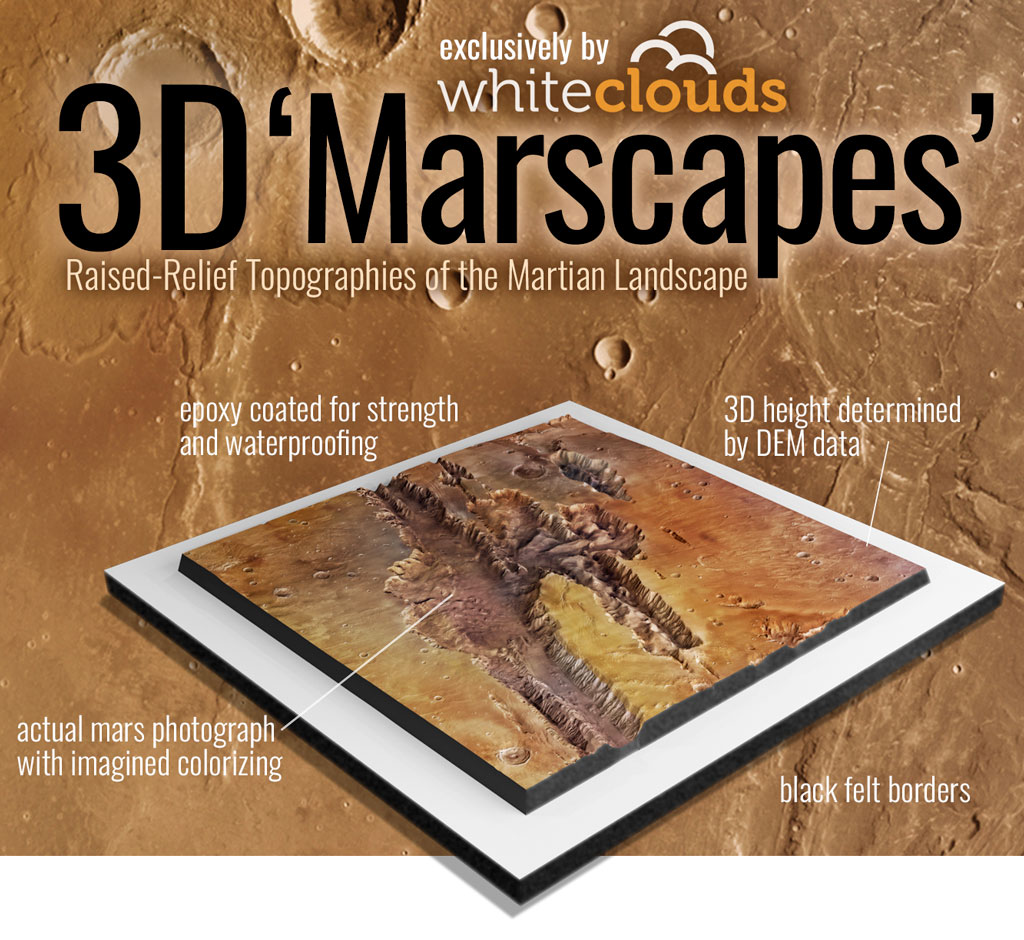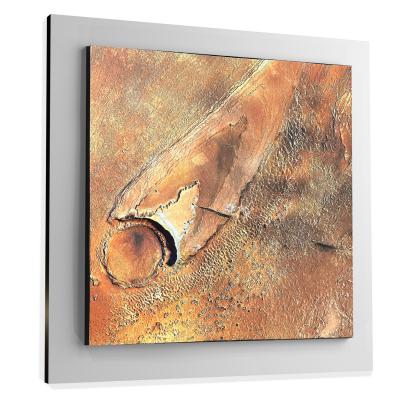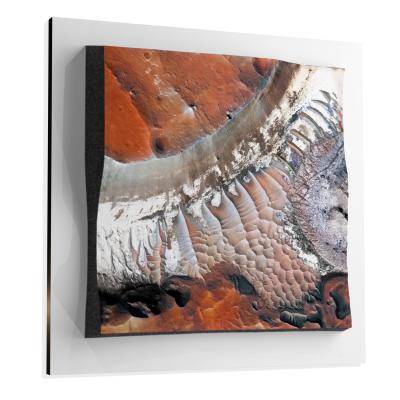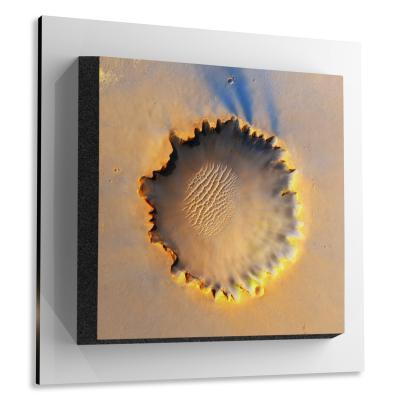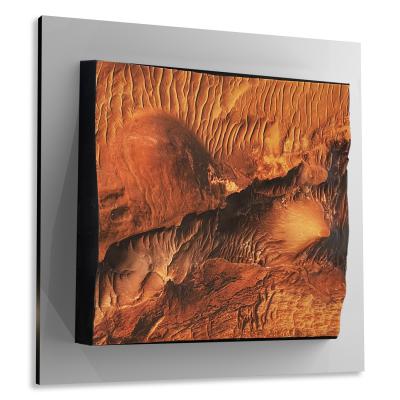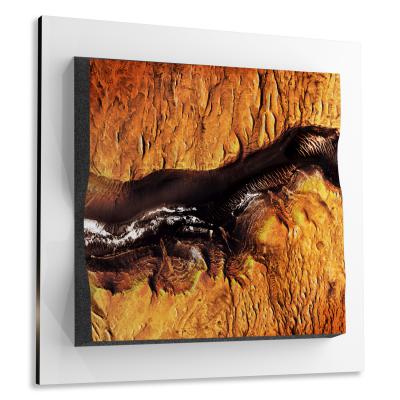Nectaris Montes
Nectaris Montes
We Build Custom 8K Mars Canvas Prints of Nectaris Montes
Did you know we make
custom
8K Mars Canvas Prints

and
3D Marscapes

Nectaris Montes
Nectaris Montes is one of the most captivating geological formations on Mars, capturing the attention of researchers and scientists globally. This fascinating mountain range not only offers an in-depth look into Mars’ complex geological history but also provides a crucial context for understanding the Martian landscape as a whole.
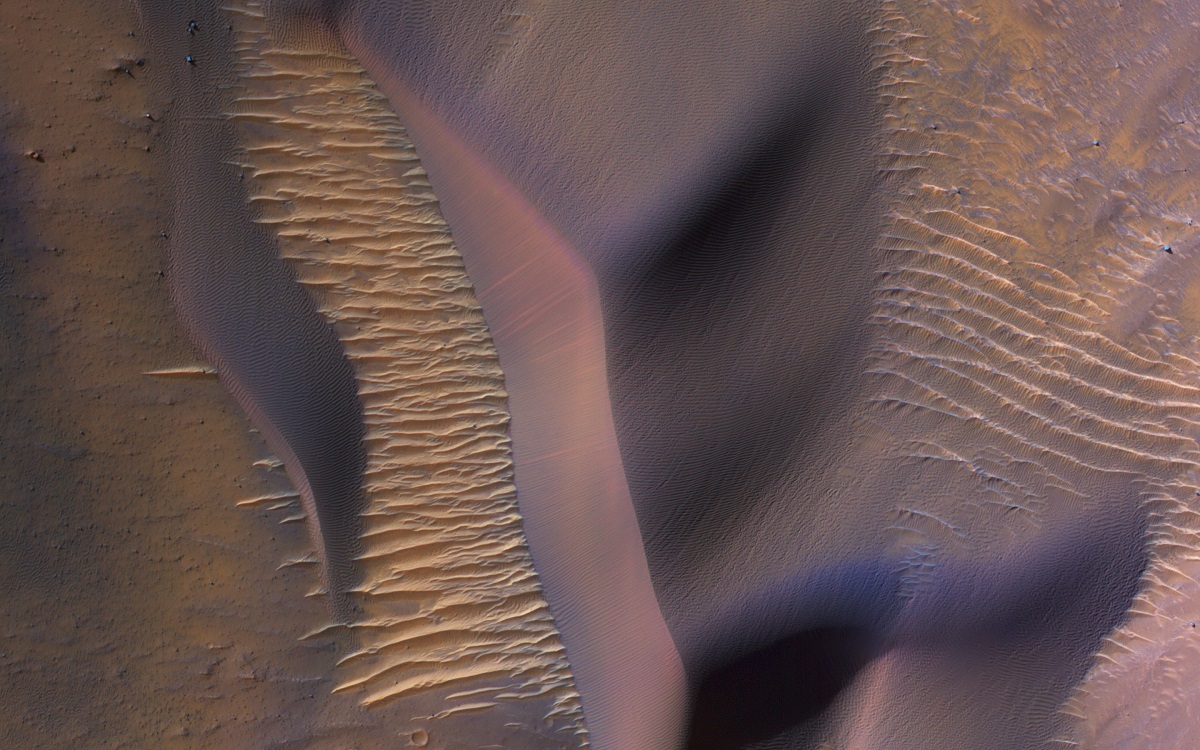 Dunes in Nectaris Montes
Dunes in Nectaris Montes
Geographical Location
Nectaris Montes is a captivating mountain range located on Mars, which often gets misidentified as lunar geography due to its similar name to a Moon basin. Specifically, the range is situated in the Terra Sirenum region of the Martian southern hemisphere. The mountain range spans across an impressive area that covers approximately 250 kilometers in length and up to 100 kilometers in width. It is positioned at roughly 35°S latitude and 105°E longitude. Its location provides a geographical setting that is rich for scientific exploration, as it lies in close proximity to other significant Martian landmarks. To the northeast, the range is adjacent to Tyrrhena Patera, a noteworthy Martian volcano, and to the southwest, it is not far from the Hellespontus Montes range. The mountain range’s geographical location makes it an ideal hotspot for analyzing a variety of geological processes, given its juxtaposition with volcanic, impact, and possibly fluvial features. This richness in surrounding geological diversity allows for a comprehensive study of Mars’ intricate geological history, including the interactions between various geophysical processes over time.
Advertisement
Sample Marscapes
Geological Composition
The geological make-up of Nectaris Montes provides a rich tapestry detailing the complex geological chronology of Mars. Primarily, the mountain range is composed of basaltic rocks, which are volcanic in origin. However, the geological profile is further complicated by the presence of sedimentary rock layers, uplifted terrains of mixed compositions, and a blend of materials thrown up by ancient impacts. Advanced spectroscopic analyses conducted from orbital missions have detected a plethora of minerals within the range. These include not just sulfates and clays, which are traditionally indicative of water-rich past environments, but also a variety of silicates. Adding another layer to the geological complexity is the observed presence of ancient lava flows interspersed with impact ejecta. This suggests a violent past for the area, marked by periods of intense volcanic activity and episodes of meteoritic bombardment. Therefore, Nectaris Montes serves as a geological encyclopedia, with each layer of rock and mineral deposit contributing to the narrative of Mars’ tumultuous geological history.
Significant Discoveries
Evidence of Ancient Water Bodies
One of the groundbreaking discoveries related to Nectaris Montes has been the identification of structures resembling ancient water channels and possible lake beds. These intriguing formations strongly point to the possibility that liquid water could have existed in the area, significantly enhancing our understanding of Mars’ past climate conditions and its potential for habitability.
Impact Craters and Their Chronology
Another area of focus has been the extensive research on impact craters discovered in and around the Nectaris Montes region. The craters vary greatly in both size and estimated age, offering scientists a natural laboratory for studying the history of meteoritic impacts on Mars. This collection of varying craters provides an incremental record of the celestial bombardment that the Red Planet has undergone, helping to paint a fuller picture of its chronological history.
Unique Mineral Deposits
In addition, the presence of specific minerals, especially certain types of sulfates and clays, has caught the scientific community’s attention. These particular minerals could potentially be biogenic, raising the tantalizing possibility that they could provide clues to the past habitability of Mars or even the existence of ancient microbial life.
Scientific Missions
The Nectaris Montes region has captivated the focus of numerous scientific missions aimed at unraveling the mysteries of Mars. Most notably, NASA’s Mars Reconnaissance Orbiter (MRO) has supplied a wealth of high-resolution images and mineralogical data that have helped clarify the region’s complex geology. Additionally, the European Space Agency’s Mars Express mission has added another dimension to our understanding by providing essential topographical data. Future missions, including those under the ExoMars program, are being planned to investigate this geologically intriguing region even further, aiming to delve deeper into its geological and possibly biological secrets.
Geomorphological Features
The geomorphological landscape of Nectaris Montes is a captivating subject in its own right, featuring an array of diverse landforms. From jagged peaks and undulating valleys to an intricate network of structures resembling ancient river channels, the range is a testament to Mars’ dynamic geological history. These varying landforms point to a multitude of geological processes at play, including both tectonic and fluvial activities that have shaped the region over time. Moreover, further scrutiny of these features could offer vital insights into erosional processes, sediment deposition, and possibly ancient climatic conditions. All these aspects make Nectaris Montes an exciting and important focal point for studies aiming to understand the geomorphological evolution of Mars.
Nectaris Montes’ diverse rock types, intricate geomorphological features, and intriguing mineralogy make it a crucial region for ongoing and future scientific research. The discoveries made here are not only central to understanding Nectaris Montes itself but are vital for unraveling the broader geological and climatic history of Mars. This fascinating mountain range remains an essential focal point for researchers aiming to decode the Red Planet’s many secrets.
Check out our 3D Mars Learning Center for more information on Mars and Nectaris Montes. You can also learn more at: NASA Mars Exploration.
More About Mars
Contact us today to learn more about our 3D services and how we can help you achieve your goals.
